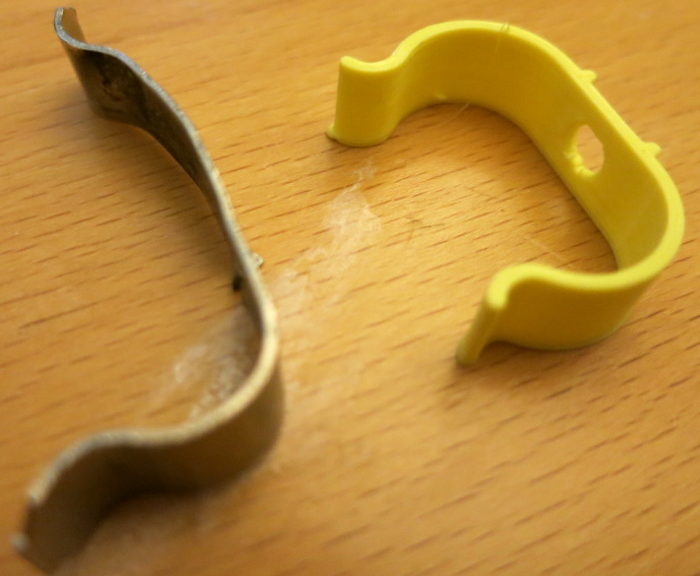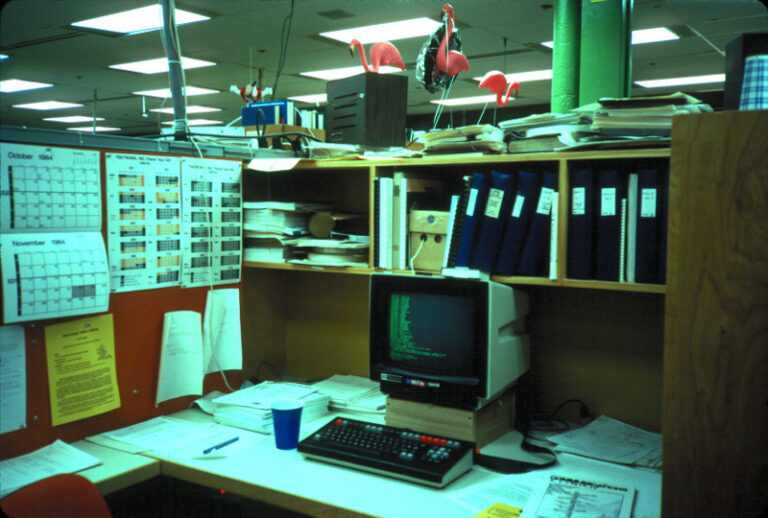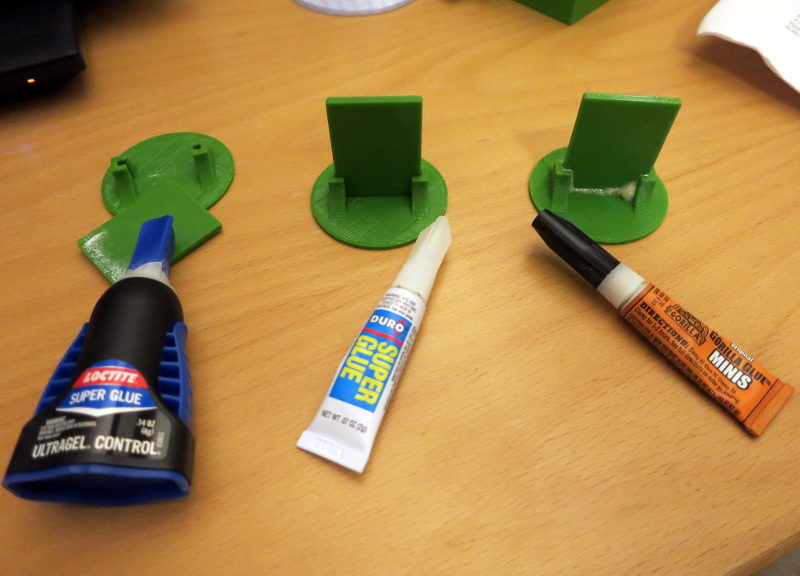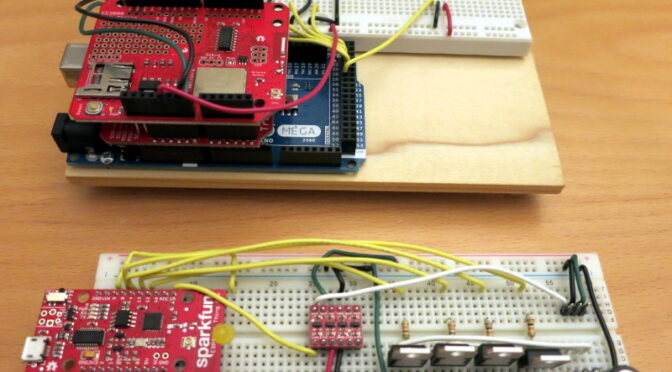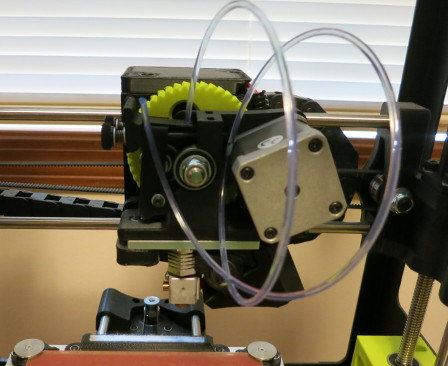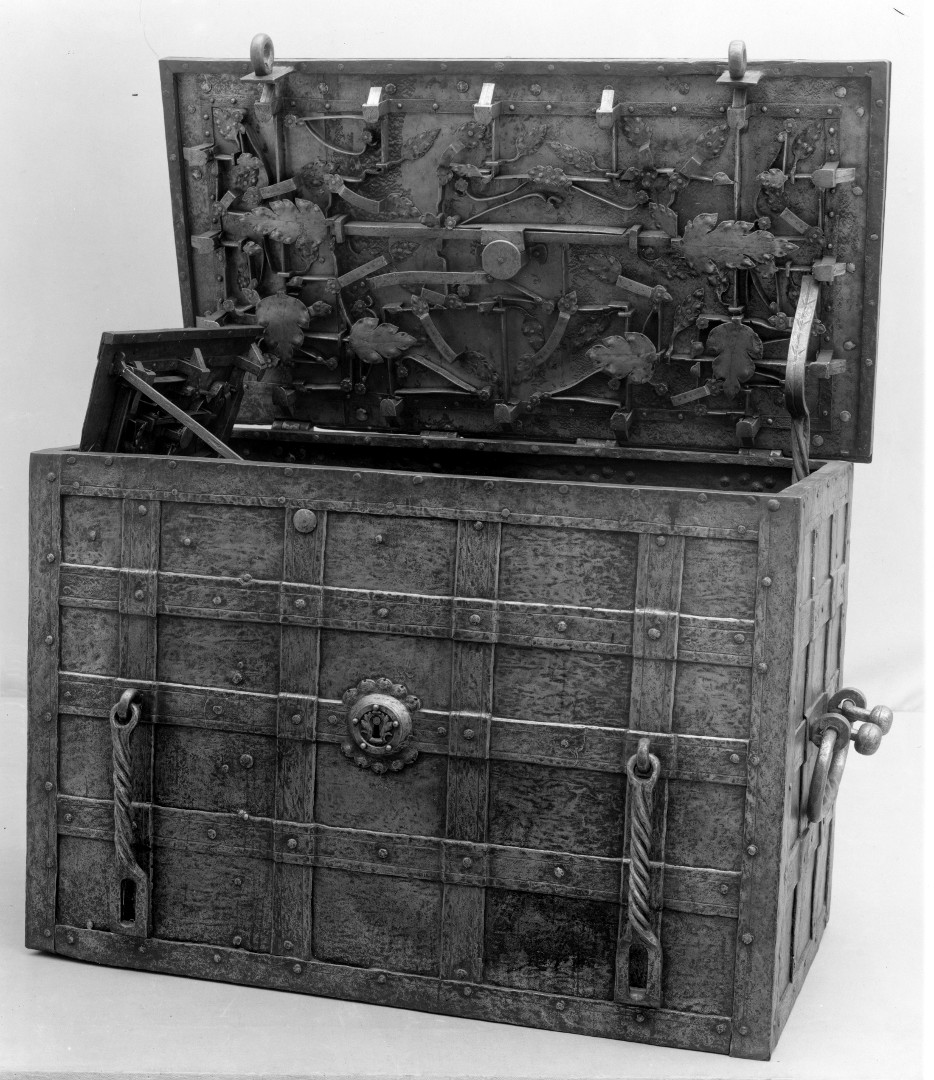I’ve begun another Arduino/ESP8266 project: reporting the level of water in our well tank. This project will involve the ESP8266, MAX31820 temperature sensors, some mechanical work, sending data to a web-based database, and interpreting the temperature data to estimate the well water level.
Continue reading Well Depth Sensing: It BeginsAll posts by Brad
Designing a 3D printed cabinet clip replacement
I’ve found 3D printing to be perfect for creating replacement parts for the various things that break around the house. Recently I realized that I could make a replacement for the armoire door clip that had been bent beyond recognition over the years. This post details how I designed and tested the 3D printed replacement, including a checklist at the end of this post.
Continue reading Designing a 3D printed cabinet clip replacement
My 1984 Desk
I try not to spend much time talking about ye olde timey computing that I lived through, because it quickly becomes boring to all but those who were there, and the future is so much more exciting. But in looking up evidence I had of Tektronix having Ethernet (and Internet connectivity before that), I found a photo of my olde timey Tektronix office desk, and couldn’t resist cataloging how office computing has changed.
It’s October 1984. The original Mac was announced in January. I’ve been working at Tektronix in Beaverton, Oregon for 6 years. On a whim, I took a picture of my office desk.
Continue reading My 1984 DeskExperimenting with PLA glue
I’ve been having trouble gluing PLA parts together reliably., so I decided to do a brief experiment.
Cost-Reducing the Lunar Clock: IoT Really is Here
I have to confess that sometimes I need a push to make the right design choice.
It’s been a long time – way too long – since I worked on my Lunar Clock project. In the meantime, Sparkfun has introduced new, inexpensive microcontrollers aimed at Internet-of-Things applications. I knew one of those new microcontrollers would be perfect for the Lunar Clock, but I dragged my feet.
Then one day, a Github user pointed out that one of the boards I was using has been obsoleted.
Continue reading Cost-Reducing the Lunar Clock: IoT Really is HereHow to Estimate Your Remaining Filament
“Do I have enough filament to print this one thing?” That’s the question on my mind whenever I’m nearing the end of a reel of filament. I can’t stand wasting a few meters of filament by underestimating what’s left, and I don’t want to unwind a few meters of filament just to measure it and wind it back on the reel.
My First 3D Printed Sundial
I’ve been interested in sundials for ages. Tracking the sun’s path by observing the shadow of a stick is an ancient form of astronomy, and a gateway into geometry (literally “land measurement”).
A sundial often marks the solstices and equinoxes, and enables measurement of the cardinal directions of north, south, east, and west: at the peak of its daily journey through the sky, the sun throws a north-south shadow; on the equinoxes, the shadow of the sun draws an east-west line. Ancient sundials acted as calendars, showing precisely when the sun returned to a given spot in its annual journey from south to north and back again.
Continue reading My First 3D Printed SundialHow to write an Arduino Library that contains Sketch-conditional code
Recently while working on an open source Arduino library (more about that later) I ran into a challenge: how to make the library’s interrupt-related code compile into the Sketch only if the Sketch writer needed it?
Continue reading How to write an Arduino Library that contains Sketch-conditional code
The best way to store 3d printing filament
If you’ve done much 3d printing, you’ve probably noticed occasional bubbles in your print. Many 3d filaments absorb water from the air, causing the plastic to bubble as it extrudes from the hot end of the printer.
How to Replace an ADT Sensor Battery
Because in-home sensor systems and User Experience are interests of mine, I offer this How To after replacing a sensor in my home alarm system.
We use an ADT home alarm system, and we’re happy with it. I know other sensor systems are just as messy to deal with, and hope this narrative can help all developers iron out the wrinkled parts of their users’ experiences.
Continue reading How to Replace an ADT Sensor Battery

